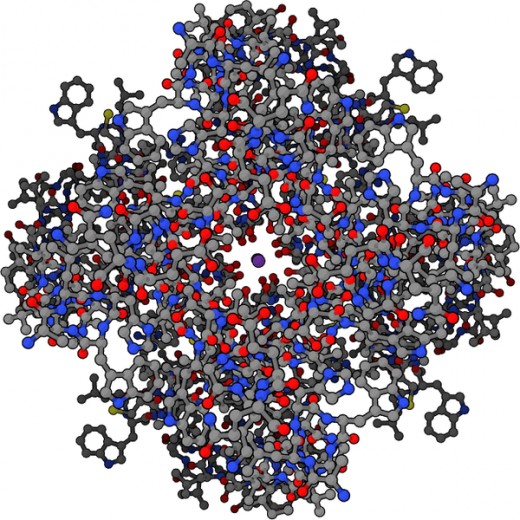Ezogabine (Potiga): A New Medication For Epilepsy
What Is Epilepsy?
Epilepsy is a neurological condition characterized by the onset of seizures--changes in behavior such as unconsciousness, staring spells or convulsions. The seizures come about because nerve cells in your brain suddenly undergo changes in the way they send electrical impulses to one another. According to the Mayo Clinic, there are two types of seizures, partial seizures that involve only a portion of the brain and generalized seizures that involve the entire brain. In about half of the cases of epilepsy, doctors don't know the cause of the condition. In the other half, the cause can be traced to heredity or to specific incidents such as a heart attack or stroke that damages the brain, head trauma or diseases such as meningitis and viral encephalitis. One of the most common diagnostic tools that doctors use for epilepsy is an instrument called an electroencephalogram which records the electrical activity of your brain on a computer or as a graph on a strip chart.
According to the Epilepsy Foundation, epilepsy affects nearly three million Americans and 50 million people worldwide. In the U.S., it is the third most frequently occurring neurological disorder after only Alzheimer's disease and stroke. Surprisingly, the number of people afflicted with epilepsy is greater than the number of cases of cerebral palsy, multiple sclerosis and Parkinson's disease combined. Although significant progress has been made in the diagnosis and treatment of epilepsy, scientists' understanding of this disorder lags far behind their understanding of many other chronic medical conditions.

Facts About Ezogabine
Ion channels are proteins that traverse the cell membrane. These proteins can form pores or openings in the cell membrane to allow ions to pass into and out of the cell. The channels are named after the ions that travel through the pore. For example, a potassium ion channel is one that regulates the movement of potassium ions into and out of the cell. The concentration of a particular ion in the cell has an effect on the cell's metabolism. The calcium channel blocker drugs that lower blood pressure are a good example of the effect of intracellular ion concentration on cellular metabolism. The calcum channel blockers close calcium channels in the cells of the muscles in the walls of vital arteries, thereby lowering the concentration of calcium in the muscle cells. Lower calcium concentration causes the muscles to relax and this increases the diameter of the artery. The larger diameter lowers resistance to the flow of blood thereby lowering blood pressure.
Ezogabine was approved by the U.S. Food and Drug Administration for the treatment of partial- onset epileptic seizures in June 2011. It is a small molecule, orally administered drug that represents the first antiepileptic medication to act on the potassium ion channels of the nerve cells in the brain. According to the FDA, ezogabine works by keeping the neuronal potassium ion channels in the open position, thereby increasing potassium levels in the nerve cells of the brain. It is an important addition to the arsenal of medications available for the treatment of epilepsy because about 33% of patients with epilepsy don't respond adequately to older drugs that work by a different mechanism. In clinical trials before it came to market, ezogabine demonstrated efficacy versus placebo in lowering the frequency of partial-onset epileptic seizures. For example, in one phase 3 study, patients receiving 900 mg per day of ezogabine showed a 40% reduction in the number of seizures over a 28-day period. By contrast, patients on placebo showed only a 16% reduction in the number of seizures. The most frequent adverse effects reported by patients on ezogabine were dizziness (23%), sleepiness (22%) and fatigue (15%). A total of 5% of all patients on the drug experienced issues with the voiding of urine. These issues included urinary hesitancy and urinary retention. The FDA believes that this is a consequence of the effects of ezogabine on the smooth muscle of the bladder.
In summary, the FDA's advisory committee briefing document on ezogabine comes to the conclusion that this drug has shown convincing evidence of efficacy in epilepsy patients who did not respond to previous medications, and it has a safety profile that is quite acceptable.
Disclaimer: This hub has been written for the sole purpose of providing information to the reader. It is not intended to be a source of any kind of medical advice or instruction, and it should not be used in the diagnosis of any illness, disease or condition. You should consult your doctor if you have questions about a specific medical problem.







